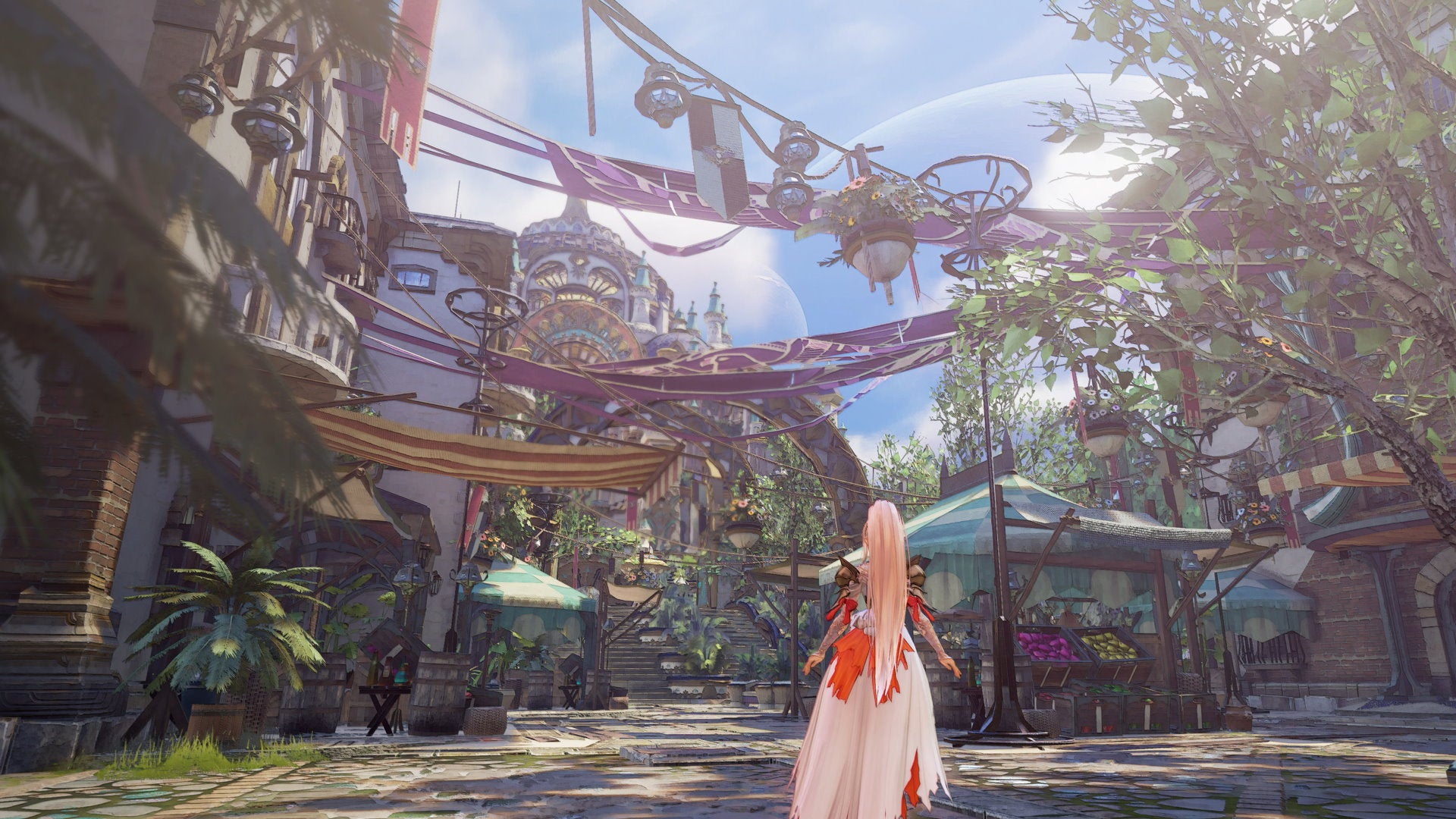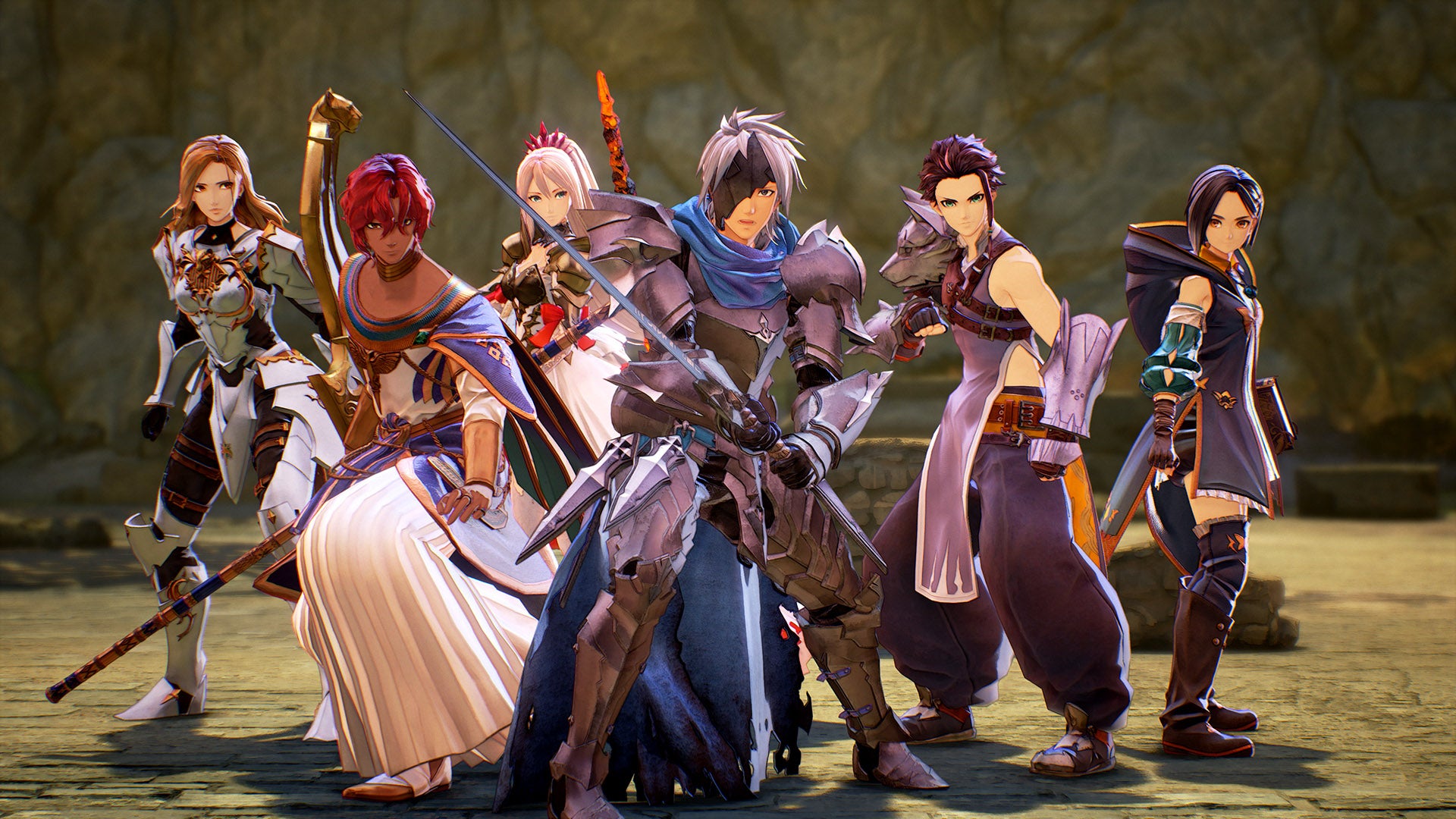These are the JRPGs that actively make me seek battles because it just feels good to leap a metre off the ground and punch an eagle in the face. These are the JRPGs that make me wonder why the protagonist wears a heavy, half-broken mask that probably screws with his peripheral vision. (Then I tell myself that my dumb anime son can do whatever he wants.) These are among my favourite kinds of JRPGs, and Bandai Namco’s Tales of Arise keeps good company with them. At last count, there are approximately ten bazillion games in the long-running Tales series, starting with 1995’s Tales of Phantasia for Nintendo’s Super Famicom. As I said in my earlier preview of Arise, I’ve only played a couple of those games leading up to Arise, including Tales of Vesperia: Definitive Edition. Most Tales games are self-contained adventures that share some world-building elements between them (I demand to live in a reality where all medicine is administered as fruit-flavoured gels), so I had no problem jumping into Arise’s story and roster. The game is as accessible as heck; no doubt Bandai Namco wants to woo Tales virgins with the series’ fresh new start on the current generation of consoles in addition to ever-swelling ranks over on PC. Spotless new Tales fans might even hold an advantage over me. The cast of Tales of Vesperia gave me genuine laughs, especially the smooth hero Yuri and the borderline deranged wizard girl, Rita. I found it harder to warm up to Arise’s cast, partially because I often compared the two groups while playing the latter. I know that’s not entirely fair, and I did it less often as I delved deeper into Arise. But there’s no denying Arise’s introduction of its main characters is wearying. Alphen starts the adventure as a slave for the Renans, a mysterious civilization that invaded the planet of Dahna 300 years ago. A brush with fate puts him in the company of Shionne, a Renan woman with a secret power who’s moody and withdrawn and doesn’t really care about that stupid fool, Alphen. The two are forced to flee for their lives before becoming entwined in a much larger plot to save Dahna from the tyrannical Renan lords ruling over it. They bicker, they snipe, and they gradually grow closer together. You’ve seen this trope before unless Arise is your first exposure to anything remotely anime. In which case…err, congratulations? Mind, I’m not dismissing Arise’s characters and story. It weaves a solid tale out of its tropes, and everything about the game - including its narrative and characters - become much more interesting when you stumble away from those awkward opening hours. Besides, Alphen and Shionne aren’t the only fighters out to liberate Dahna. You’re joined by several freedom fighters, including the solemn lady knight Kisara whom I immediately crushed on. Arise’s characters might not always be perfect vessels for the game’s narrative, but one thing’s for sure: they’re all champions on the battlefield. The Tales series mixes traditional JRPG enemy encounters and stats with real-time, action-based fights that forego menu commands. This trademark combination of gameplay styles works exceptionally well in Arise, which encourages you to mix up your attacks and make the stupidest combos imaginable. When you enter a fight - no random encounters, woo! - you immediately dig into your foes with standard attacks, then mix up those strikes with skills known as “artes”. Skills/artes are executed by pressing the corresponding face button on your controller, and you can only pull off a limited number before your skill metre needs to recharge. Despite this limitation, I sometimes spent entire encounters airborne while I juggled foes from one end of the battlefield to the next. Any character can take the lead in Arise, which means you can fight with guns, staffs, or magic, but I mostly stuck with Alphen. I’m a melee fighter at heart, plus the swordplay in Arise just feels really good. I never get tired of feeling those heavy blows shake up through my controller, nor do I ever tire of executing over-the-top Boost Attacks with the aid of my comrades. Oh, you’re the Lord of Light or whatever? Well, I just made a whirlwind by swinging my sword really hard, and my friend lit that whirlwind on fire. Go to hell. Arise’s battle system seems like a lot at first, but it’s easy to get into, and it rewards you with big numbers and big lights. Sometimes that’s exactly what you need from a JRPG. Boss fights are particularly intense, as bashing buttons won’t get you far. You need to actually exploit weaknesses, bust through shields with specialized artes, and keep a very close eye on your party’s shared pool of magic points (known as CP). Bosses in Arise have very high HP, and battles can become chaotic when the heroes and bad guy(s) start flinging their powers at each other. Thankfully, Arise rarely drops frames regardless of how busy it gets - and even if it does, there are plenty of options to help tweak your PC’s performance, including a resolution scaler and a frame rate cap. There’s some texture pop-in on PC, and it takes a little time for your surroundings to get seriously interesting, but you’re always compelled to explore because the world maps are stuffed with secrets. Valuable treasures, ore, and cooking ingredients show up on maps after you find them, which encourages you to travel from one corner to the next. You also want to keep a sharp eye out for owls, who reward you with the nutty costumes and accessories the Tales series has become (in)famous for. I immediately made a rule that nobody was allowed in my party if they didn’t put on a pair of animal ears and a tail. Blessed are the catboys, for they shall bring peace to worlds at war. I lack the qualifications to make a precision argument about whether Arise is worth the wait for long-suffering Tales fans - the last one, Tales Of Berseria, came out all the way back in 2016. Nevertheless, my instincts shrug and say, “Sure, why not?” Despite the tedious introduction of its two main characters, it’s filled with strong character moments and ridiculous battles that remind us only nerds and squares bend to gravity’s iron rules.


